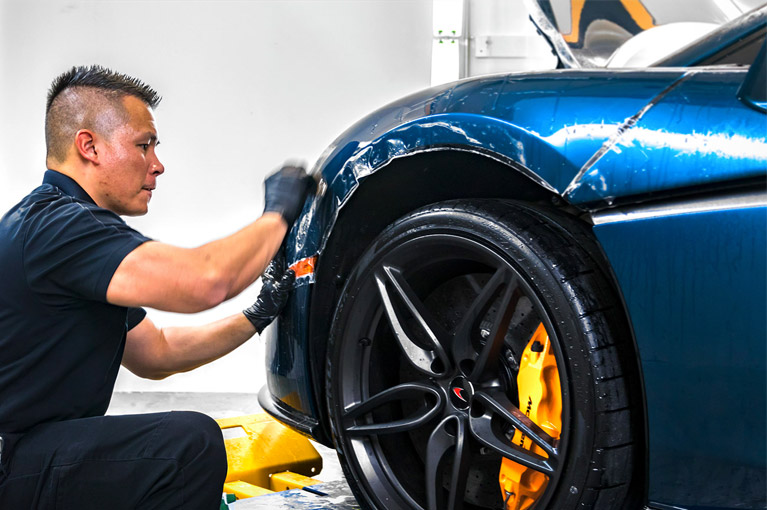
Car suspension systems play a pivotal role in ensuring a smooth and comfortable ride while also enhancing vehicle stability and handling. Over the years, these systems have undergone significant advancements, revolutionizing the driving experience for millions of motorists worldwide. That informative content is created by Top Cash For Cars Service in Sydney
Definition and Purpose
At its core, a car suspension system consists of various components such as springs, shock absorbers, and linkages that work together to minimize the impact of road irregularities on the vehicle and its occupants. The primary purpose of a suspension system is to absorb shocks from the road surface, maintain tire contact with the ground, and provide stability during cornering, braking, and acceleration.
Evolution of Suspension Systems
The history of car suspension systems dates back to the early days of automotive engineering, where primitive designs relied on rigid axles and leaf springs to support the vehicle’s weight. However, as automotive technology advanced, engineers began experimenting with more sophisticated suspension configurations to improve ride comfort and handling.
Types of Car Suspension Systems
There are several types of car suspension systems, each offering unique characteristics and benefits to drivers. These include dependent suspension systems, independent suspension systems, and adaptive suspension systems.
Dependent Suspension Systems
Dependent suspension systems, also known as solid axle suspensions, connect the wheels on each side of the vehicle to a single axle. While cost-effective and robust, dependent suspension systems often result in a harsher ride quality and limited wheel articulation, especially on uneven terrain.
Independent Suspension Systems
Independent suspension systems, on the other hand, allow each wheel to move independently of the others, providing better traction and handling characteristics. Common types of independent suspension systems include MacPherson struts, double wishbone suspensions, and multi-link suspensions.
Adaptive Suspension Systems
Adaptive suspension systems represent the latest advancements in automotive engineering, offering real-time adjustment of damping rates and ride height based on driving conditions and driver preferences. These systems use sensors and actuators to continuously monitor and adjust the vehicle’s suspension settings, resulting in a smoother ride and improved handling.
Advancements in Car Suspension Systems
In recent years, car manufacturers have introduced several groundbreaking advancements in suspension technology, aimed at enhancing comfort, performance, and safety for drivers and passengers alike.
visit: https://fastlinkcarremoval.com.au/
Electronic Dampers
Electronic dampers, also known as active dampers, utilize electronically controlled valves to adjust the damping force of the shock absorbers in real-time. By continuously adapting to changing road conditions, electronic dampers can provide a more refined and controlled ride experience, minimizing body roll and improving cornering stability.
Air Suspension Systems
Air suspension systems replace traditional coil or leaf springs with air springs that can be inflated or deflated to adjust the vehicle’s ride height and stiffness. This allows drivers to customize their driving experience, from a comfortable cruising mode to a sportier, more dynamic setup.
Magnetic Suspension Systems
Magnetic suspension systems, such as MagneRide by Delphi and Magnetic Ride Control by General Motors, utilize magnetorheological fluid and electromagnetic coils to adjust the stiffness of the shock absorbers instantaneously. This enables unparalleled responsiveness and agility, making magnetic suspension systems popular in high-performance vehicles.
Active Suspension Systems
Active suspension systems combine various sensors, actuators, and control algorithms to actively manage the vehicle’s suspension settings in real-time. By continuously optimizing ride height, damping rates, and wheel alignment, active suspension systems can deliver superior ride comfort and handling performance across a wide range of driving conditions.
Benefits of Advanced Suspension Systems
The adoption of advanced suspension systems offers numerous benefits for drivers and vehicle occupants, including:
Improved Ride Quality
Advanced suspension systems can significantly reduce vibrations, noise, and harshness, resulting in a smoother and more comfortable ride, even on rough or uneven road surfaces.
Enhanced Handling and Stability
By optimizing tire contact and chassis dynamics, advanced suspension systems can improve vehicle stability, cornering grip, and overall handling performance, enhancing driver confidence and control.
visit: https://fastlinkcarremoval.com.au/broken-car-removal/
Customizable Driving Experience
With features like adjustable ride height, damping settings, and stiffness levels, advanced suspension systems allow drivers to tailor their driving experience to suit their preferences, whether it’s a relaxing commute or an exhilarating weekend drive.
Challenges and Limitations
Despite their numerous benefits, advanced suspension systems also pose certain challenges and limitations that need to be addressed:
Cost
The integration of complex electronic components and sophisticated control systems can significantly increase the cost of vehicles equipped with advanced suspension systems, limiting their accessibility to mainstream consumers.
Complexity
Advanced suspension systems often require specialized training and equipment for maintenance and repairs, which can pose challenges for technicians and increase servicing costs over the vehicle’s lifespan.
Maintenance
While advanced suspension systems are designed to be durable and reliable, they may require more frequent inspections and servicing to ensure optimal performance and longevity, adding to the overall ownership costs.
Future Trends in Car Suspension Systems
Looking ahead, the future of car suspension systems is poised for further innovation and advancement, driven by emerging technologies and evolving consumer demands.
Integration with Autonomous Driving
As autonomous driving technology continues to evolve, car suspension systems may play a crucial role in enhancing vehicle stability and comfort during autonomous operation, ensuring a seamless transition between manual and automated driving modes.
Sustainability and Environmental Considerations
With growing concerns about climate change and air quality, future suspension systems may prioritize lightweight materials, energy-efficient designs, and recyclable components to minimize environmental impact and improve overall sustainability.
Continued Innovation and Research
The automotive industry is constantly pushing the boundaries of engineering and design, exploring new materials, manufacturing techniques, and control algorithms to create the next generation of advanced suspension systems that redefine the driving experience.
visit: https://fastlinkcarremoval.com.au/damaged-cars-removal/
Conclusion
In conclusion, advancements in car suspension systems have revolutionized the way we perceive and interact with vehicles, offering unparalleled comfort, performance, and safety for drivers and passengers alike. From electronic dampers to magnetic suspension systems, the future of automotive suspension technology holds endless possibilities for innovation and improvement.
FAQs
-
Are advanced suspension systems only available in high-end luxury vehicles? Advanced suspension systems are becoming increasingly common across a wide range of vehicles, including mainstream sedans, SUVs, and trucks, thanks to advancements in manufacturing and cost reduction.
-
Do advanced suspension systems require special maintenance? While advanced suspension systems may require specialized servicing, routine maintenance such as fluid checks and alignment adjustments are similar to conventional suspension systems.
-
Can I retrofit my existing vehicle with an advanced suspension system? Retrofitting an existing vehicle with an advanced suspension system can be challenging and costly, as it may require extensive modifications to the chassis and drivetrain components.
-
Are advanced suspension systems more prone to failure? Advanced suspension systems are engineered to meet rigorous durability and reliability standards, but like any complex mechanical system, they may experience occasional issues that require attention from trained technicians.
-
How do advanced suspension systems improve fuel efficiency? By optimizing ride height, aerodynamics, and tire contact, advanced suspension systems can help reduce drag and improve overall vehicle efficiency, resulting in better fuel economy and reduced emissions.








